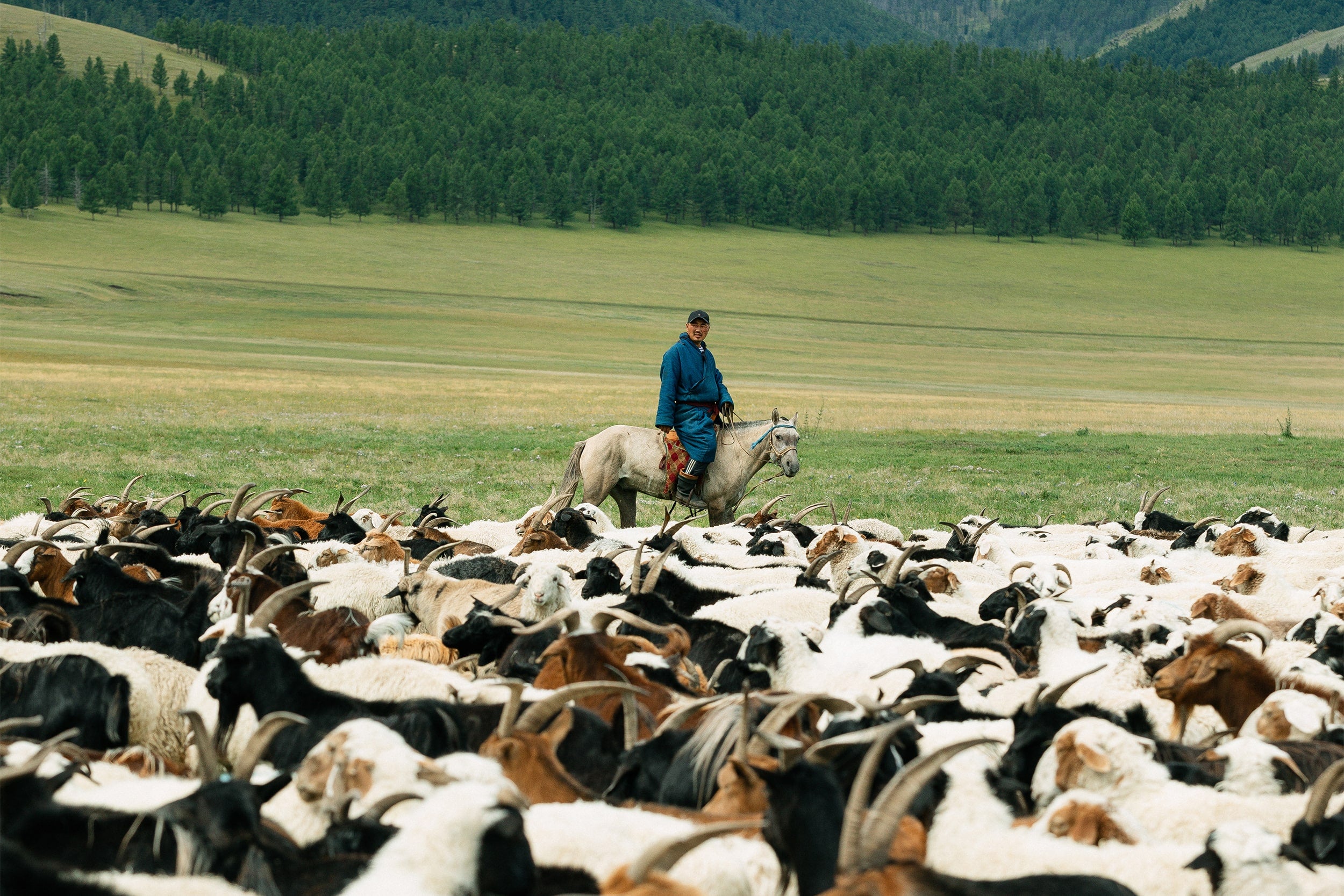For centuries, a natural coexistence between herder and animal has shaped the values, traditions and culture of Mongolians. Today, it become a lifestyle that emphasizes importance of natural cycle which every living organism interacts and are dependent on one another to ultimately survive. There are even historical accounts of wisdom regarding living harmoniously with nature, as tales of legends that speak of the mountains, rivers and so on.
Today, over a third of Mongolia’s population are still practicing nomadism, an admired lifestyle that have remained relatively unchanged since the Early Bronze Age.

So, what is a nomad?
A nomad can be described as a person who often travels from one place to another periodically. For Mongolian nomadic herders, their home is just about anywhere in the vast steppes of Mongolia along with their herd since majority of the land is left open unclaimed to any person.
How do they move?
In the Mongolian countryside, there is not a single fence to be seen for hundreds of miles in any direction. There’s an uninterrupted sea of steppes, deserts, forests, mountains, long rivers and pristine lakes. There are very few paved roads and even fewer electrical lines.
Rarely spending more than a few weeks in one location and having to relocate across rough unforgiving terrain, Mongolian herders travel light on horseback with only the basic necessities. They bring their herds and a transportable home called a ‘ger’ (or yurt in Turkish language), a home remnant of the ancient nomadic herders. They travel slow and simply enjoy life as they go.

Why do they move?
To understand why Mongolian herders live a nomadic lifestyle, it’s important to understand how much they rely on the five animals critical to their survival: yaks, sheep, goats, camels and horses.
Mongolia has one of the most extreme winters in the world. In a country where temperatures can drop to -40oC, meat is an important part of the nomadic diet. It helps them bulk up against the cold and gives them the strength to endure the harsh wilderness for long periods of time. For extra nutrition, milk from these animals is used to hand-make traditional foods such as yogurt, butter, cheese, milk tea, fermented milk and other sweets.
Even their hide and skin are quintessential to their lifestyle. Cashmere from goats and wool from sheep are pressed into felt to make clothes, bedding and shelter; horses, camels and yaks used as transport; hairs and bones to make musical instruments and toys; and even their dried dung used as fuel for fires to make food and to warm up their homes. To put it simply, nothing goes to waste.
As such, their survival is intrinsically connected to these animals that make up their herd. Therefore, Mongolian nomadic herders make it their main mission in life to take care of their livestock. So much so that by upending and relocating their dwellings several times a year, nomadism has become a large part of their culture.

How do they look after their herds?
Because of the dramatic changes of weather conditions in Mongolia, nomadic herders use what’s known as ‘king knowledge’, an age-old wisdom passed down by the generations to ensure the survival of their herds. So essential is this knowledge that without it, it could spell danger for both herder and animal.
For instance, if herders move their herd to the mountain pastures before winter begins, water will be too scarce for the animals. If they hand-comb the goats and sheep too early in the season, they can die of hypothermia. And without any livestock, herders can lose their entire livelihood.
Not only that, it also builds an understanding relationship between them. The act of herding itself is a beautiful dance between humans and animals. Mongolian herders have developed a unique way to communicate with the five animals. They discovered that each animal reacts differently to various sounds. For example, they found horses respond more to the gentle ‘chu-chu’ and cows to the more forceful ‘huch-huch’. With these sounds, herders can easily guide and corral their livestock when it’s time to move to different areas to graze.

Will the nomadic lifestyle live on?
It would be easy to think of Mongolia as somewhat stuck in the past and old-fashioned, but that wouldn’t be accurate. Mongolian nomads choose to live off the land because it’s simply a way of life that they see brings true value and fuel for their spirits. For them, it’s unusual to think of animals being raised behind fences and in pens, because it’s almost unthinkable to keep the animals from their natural habitat and treat the animals who give us so much in an unethical manner.
We see this nomadic lifestyle enduring because brands like GOBI Cashmere have an undeniable close bond with the traditional nomadic lifestyle. As an authentic Mongolian cashmere brand, we play our part as a responsible and ethical producer whose cashmere goats are raised and hand-combed by the nomad herders themselves. So, with each purchase of our Truly Traceable Cashmere, we appreciate our customers whose support allows for the conservation of the culture and lifestyle of our herders and the land on which our cashmere comes from.
